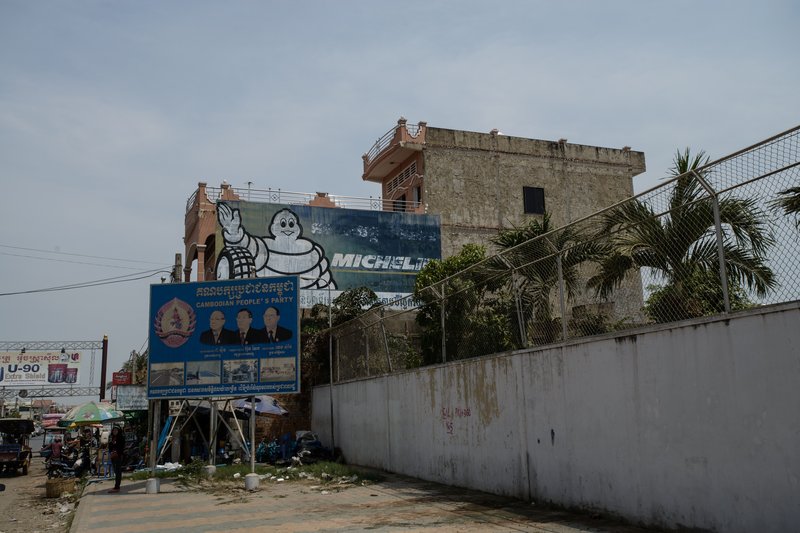As the world’s first Sustainable Rubber Platform is launched, Global Witness asks whether tire companies can make good on their promises
Palm oil. It’s in our shampoo, our kitchen cleaner and our chocolate spread. But you probably already knew that, given the growing campaign around its unsustainability.
Palm oil is the third largest agricultural driver of deforestation on earth, and its expansion is also the biggest threat to the survival of the world’s remaining orang-utans in their habitats Borneo and Sumatra.
In the last 16 years alone, 100,000 Bornean orang-utans have been lost and the species is now critically endangered.
These revelations have sparked action from the grassroots to the boardroom – with masses mobilising around the issue on social media, and even UK supermarket Iceland pledging not to include it in own brand products. (The subject has become so hot that the store recently found itself in the middle of an advertisement ban, after its Christmas commercial with Greenpeace on palm oil faced a ban for being “too political”).
But now we could be seeing a new global poster boy for the widespread deforestation crippling the environment: rubber.
Rubber is in the car and bicycle tires that take us to work; in our condoms, our mattresses, our sports shoes. Most likely, that rubber comes from trees in South East Asia – the region responsible for 90% of the world’s production of the material.
And while small farmers produce most of it, the last decade has seen swathes of the world’s last remaining forests cleared for industrial-sized rubber plantations. This destruction is an epic problem for our climate and our environment.
Global tree cover loss – in large part caused by agricultural commodities like rubber, beef and soy – hit a record peak in 2016, with an area the size of New Zealand hacked down in that year alone.
If we protect and restore forests, the world will be able to mitigate the 18% of carbon emissions that’s needed by 2030 to avoid runaway climate breakdown. And as lives, homes and communities continue to be destroyed by climate breakdown, this is not an option we can afford to ignore.

The Sustainable Rubber Platform
This week sees the launch of a Sustainable Rubber Platform initiated by the tire industry, which could help tackle the terrible devastation caused by the sector – but only it if it’s done right.
The platform is the first and only global multi-stakeholder initiative aimed at improving farmers’ livelihoods and addressing environmental and human rights abuses driven by the rubber industry.
A range of actors are involved including major brand tire companies and car manufacturers, rubber producers and processors and international NGOs.
Given that its members represent two-thirds of global tire production, its potential to leverage positive change by helping halt land rights abuses and deforestation is significant.
The brands which use this rubber the most – and so help fuel the global demand which is driving deforestation – are the world’s six biggest tire companies, including Goodyear, Pirelli, Bridgestone and Michelin. And every single one of them has been coming under increasing scrutiny in the last few years.
Global Witness was the first to uncover the harms caused by the rubber industry five years ago - our report exposed rubber companies in Cambodia and Laos forcibly removing people from their homes without compensation and logging illegally in protected forests. Violence, harassment and forced evictions were regularly reported by local communities.
Increasing exposure of the rubber industry’s impact in the region hasn’t stopped there. Cambodia and the wider Mekong countries have been targeted for industrial rubber expansion over the past 10-15 years, after countries like China and Vietnam ran out of land for rubber expansion.
This has driven a land-grabbing crisis, with forest loss in Cambodia accelerating faster than any other country in the world between 2001 and 2015. And crucial biodiversity in the region has also been impacted with threatened species like the Siamese crocodile and Asian elephant pushed further towards extinction.
Figures show that trees lost in Cambodia correspond with the ups and downs of the global price of rubber – highlighting the strong link between the industry fuelling environmental destruction. In total, data indicates Cambodia has lost around 1.59 million hectares of forest from 2001 through 2014 – an area a little larger than the U.S. state of Connecticut.
Global Witness’ exposé caused deep discomfort, and prompted a promise from tire companies like Michelin and Goodyear that change would come. But 5 years after our report, abuses within the rubber industry prevail, and tire titans are now forced to answer difficult questions on possible violations in their supply chains. Recent allegations of abuses caused by rubber expansion in Cameroon by Greenpeace are testament to the ongoing problems in the sector.
This should matter not only to consumers who buy tires, or use them. Brands like Pirelli and Goodyear – the US company alone has a market cap of over six billion dollars according to Forbes – have grown to global power without ever really proving they are getting rubber from truly sustainable sources. They sponsor our football games and racing car industry, and dominate our skies with their iconic blimps. They form a global and ubiquitous industry.
It is crucial that they pay as much attention to their supply chains as they do their PR.
Companies need to be transparent about abuses they’ve identified in their supply chains, and be held accountable by the platform to clean up any violations, with a strict and clear timeline. And any companies that don’t comply to the rules of the platform should ensure that abuses are redressed and if necessary, have their membership revoked.
It’s up to the tire companies, these huge titans of industry which yield extraordinary power, to create real action – and not greenwash those driving an unsustainable and damaging rubber trade.

